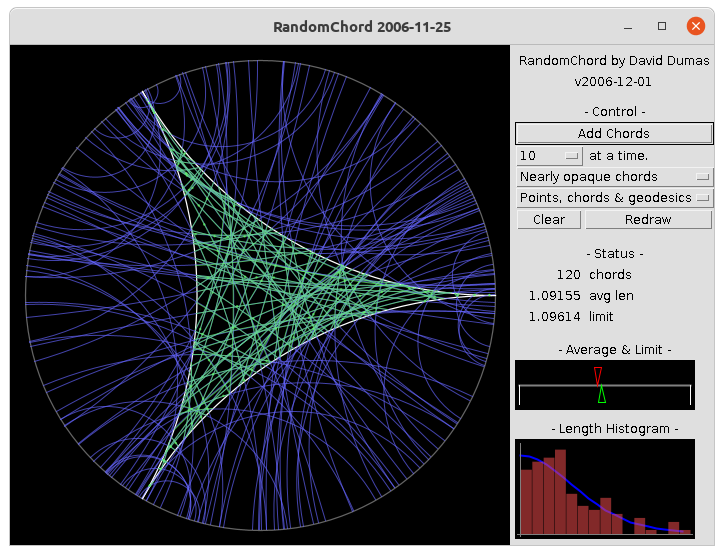Random Chords Applet

Previously, the Random Chords applet was embedded in this page. Modern browsers do not support Java applets, so to use the applet you need to download it.

Previously, the Random Chords applet was embedded in this page. Modern browsers do not support Java applets, so to use the applet you need to download it.
java -jar RandomChord.jarOn other platforms, the steps necessary to run an applet from a JAR will vary.
This applet demonstrates a result from the paper:
In particular, the expected length of the chord containing a randomly chosen point and unit tangent vector is (9/π2)ζ(3) = 1.096144454... . In the applet, one can observe the convergence of the sample distribution of a large but finite set of chord lengths to this limiting continuous distribution. The main display at left shows the basepoints and chords, while the displays at right show the mean length (and an interval of width 4σ/√n centered at the mean) and a 15-bin histogram of the lengths (compared to the theoretical distribution curve).
Note that the convergence is not particularly fast; you should try 5000 to 10000 chords to see convincing results. The java drawing functions are also somewhat slow, so a complete redraw of this many chords (e.g. if you change from transparent to opaque, or from complete geodesics to chords, etc.) will take quite a while. Adding additional chords should remain relatively quick, however.
In the paper, the distribution of chord lengths is used to derive further results about the intersections between a generic geodesic ray on a compact hyperbolic surface and a maximal geodesic lamination.